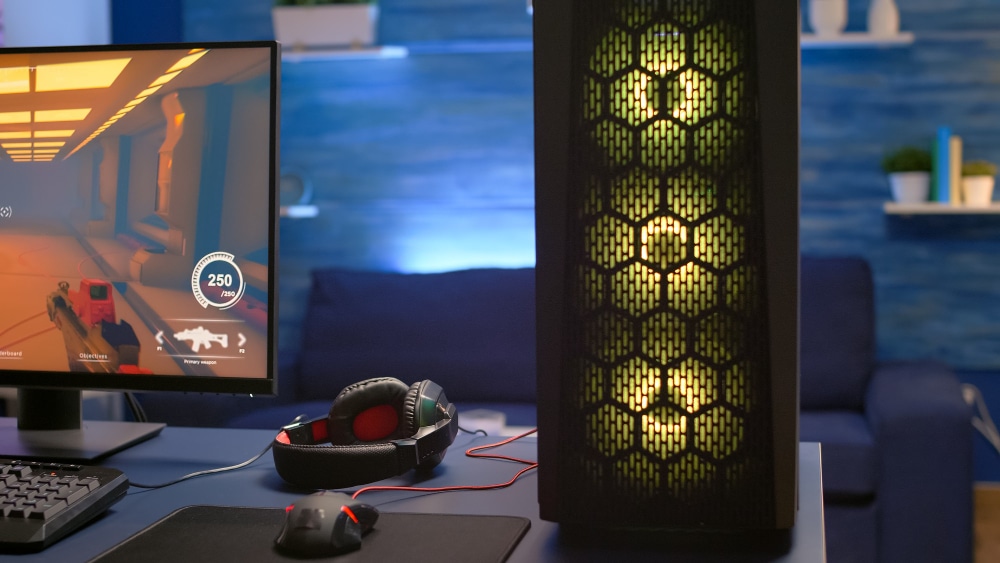In the ever-evolving world of online gaming, one element has consistently played a pivotal role in shaping player experiences: graphics.

From the rudimentary pixels of yesteryear to the near-photorealistic landscapes of today, the graphical evolution has not just redefined games. It has also transformed our expectations and experiences as gamers. Let’s journey to understand how advanced graphics have revolutionized the gaming world, making it more immersive and visually captivating.
The Early Days: Pixels to Polygons
Remember the days of blocky characters and simple backgrounds? The early era of gaming was marked by 8-bit and 16-bit graphics, which, while innovative at the time, were limited in their ability to convey detailed environments and characters. These graphics retain a certain charm, evoking nostalgia and symbolizing the dawn of digital gaming. Games like Super Mario Bros. and The Legend of Zelda used these limitations creatively, weaving engaging stories and gameplay within their pixelated worlds.
Then came 3D graphics, marking a seismic shift in the industry. This era introduced us to polygons, allowing 3D models and environments to be created. Suddenly, gamers were exploring worlds with depth and perspective, a stark contrast to the flat 2D planes of the past. Games like Tomb Raider and Final Fantasy VII were trailblazers, showing us the potential of 3D graphics in storytelling and gameplay and setting the stage for an exciting future in gaming visuals.
The Leap to Realism: High Definition and Beyond
The introduction of high-definition (HD) graphics marked a significant leap forward. Suddenly, games were not just about playing; they were about experiencing. The enhanced resolution and attention to detail brought us closer to realism. Take The Elder Scrolls V: Skyrim, for instance. It’s breathtaking landscapes and intricate character designs set a new benchmark for what games could look like. HD graphics transformed gaming into a medium that could rival film and television in visual quality. Players could now lose themselves in richly detailed worlds where every blade of grass and ripple of water added depth to the gaming experience.
But it didn’t stop there. Technological advancement has brought us to the era of 4K and even 8K resolutions, pushing the boundaries further. Games like Red Dead Redemption 2 and The Last of Us Part II have showcased what’s possible with meticulous attention to detail, lighting, and textures, creating incredibly lifelike and immersive worlds. These developments not only enhance the visual pleasure but also deepen the emotional connection to the games. As we venture through these detailed environments, we’re not just observers but active participants in a vivid, ever-evolving story.
Interestingly, this graphical transformation has been broadened beyond action or role-playing games. Online slots, a genre often overlooked when discussing graphic advancements, have evolved significantly. Once simple, with basic symbols and minimalistic designs, online slots have embraced the graphical revolution.
Take Sweet Bonanza, for example. Gone are the days of monotonous fruit symbols and plain backgrounds. This game is a testament to how far online slots have come. It boasts vibrant colors, animated symbols, and a dynamic background; it’s a feast for the eyes. The game’s design is artistic, blending whimsical themes with advanced graphics to create an engaging visual experience. It’s a perfect example of how even genres rooted in traditional simplicity are not immune to the allure of graphical advancement.
In summary, the journey of graphical evolution in online games is far from over. From the polygons that amazed us decades ago to the ultra-realistic visuals we enjoy today, graphics have continually pushed the envelope, enhancing our gaming experiences profoundly. Whether it’s exploring vast open worlds or engaging in intense action sequences, advanced graphics have undeniably transformed online games, and they will continue to do so, shaping the future of this dynamic and exciting medium.
As we look to the future, it’s clear that graphics will continue to play a crucial role in gaming. Technologies like virtual reality and augmented reality already hint at new possibilities, offering even more immersive experiences.
Imagine entering a game world that feels as real as our own, interacting with environments and characters in unimaginable ways. The future looks bright.

